Some interesting stories here, from the Irish lads who left home to fight for Ireland and Empire and came home to a country where a lot of people didn't want to be part of the Empire any more.
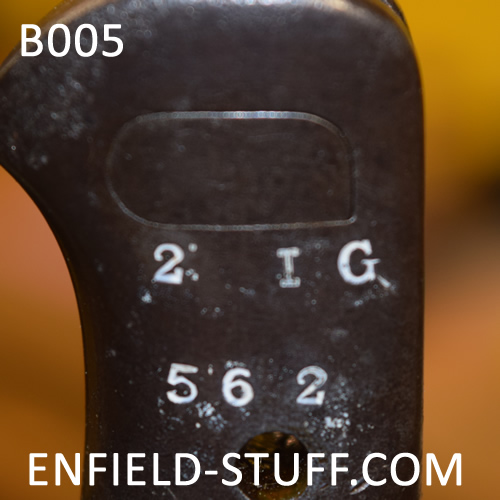 |
Bayonet 005
Pattern of 1907 bayonet; RSAF ENFIELD 06-1911; Quillion machined off; 1917 arsenal marks; marked 2 IG over 562 2ND IRISH GUARDS.
Teardrop scabbard: stamps on locket, chape and leather faint and hard to read. With cap badge.
|
 |
Rifle 028
Lee-Enfield Carbine Mk I Enfield 1898. Converted to Royal Irish Constabulary pattern carbine (a LEC carbine modified with a new nosecap to take the P1888 bayonet) in 1904 as part of a contract for 10,000 rifles. Overall 90% + finish; wood is VG with only the usual nicks and dents. Matched (bolt, receiver, barrel, rear sight leaf). No import marks.
This lad is Beutewaffen (German for “captured weapon”.) See Enfields-in-Queue: Nazi Germany.
|
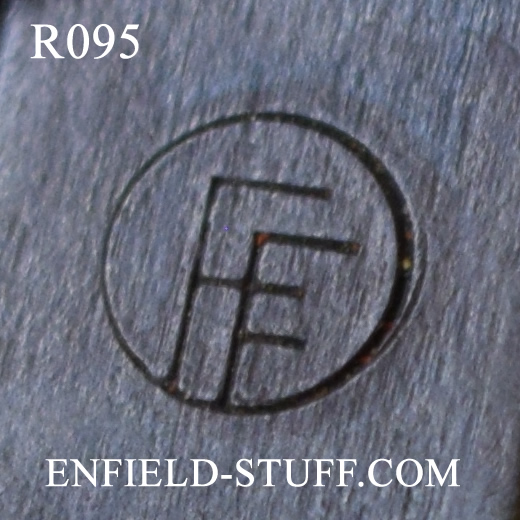 |
Rifle 095
SMLE No. 1 Mk III* BSA 1918. This rifle is marked on both the receiver and knox form “FF” indicating “Fianna Fail.” Upon granting of Irish independence in 1921, the new government of the Republic of Ireland formed a new national army. Weapons of this force were supplied by Britain, with the standard service rifle being the SMLE. These rifles were marked “FF”. Throughout the 1920s and 1930s the Irish continued to purchase rifles from Britain, all of which were marked with the “FF” cartouche. This practice was discontinued after WWII. Overall 90% + finish; wood is VG with only the usual nicks and dents. Matched (bolt, receiver, barrel, rear sight leaf, nosecap, forestock). No import marks.
|
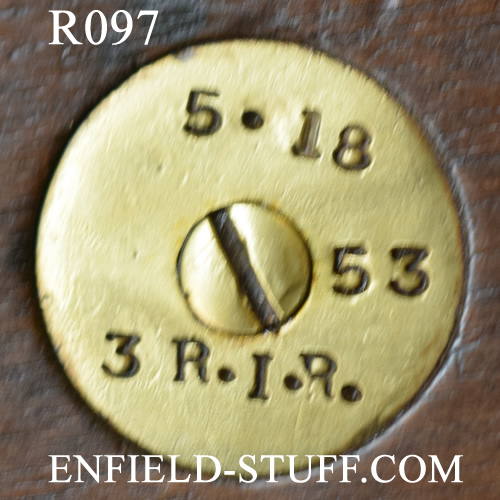 |
Rifle 097
SMLE, No. 1 Mk III* Enfield 1918. Marked to 3rd R.I.R. (3rd Battalion, Royal Irish Rifles, 5/18 ). In May 1918, the 3rd Battalion of the RIR was in Dublin and engaged against the IRA. Overall 90%+. Wood VG with typical small dings and dents. Matched (bolt, receiver, barrel, sight, nosecap, and forestock. No import marks. Good solid bonafides for the Irish Revolution.
|
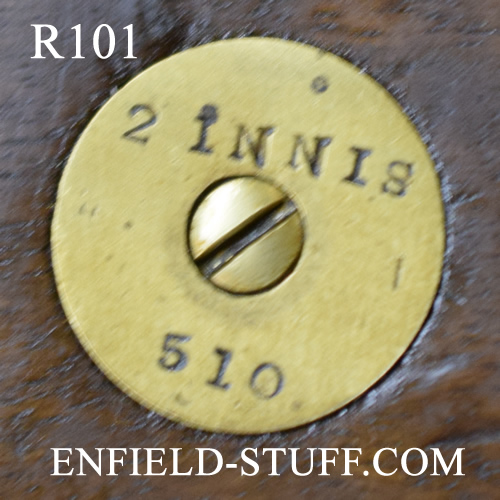 |
Rifle 101
SMLE, No. 1 Mk III BSA 1940. 2 INNIS (2nd Battalion, Inniskilling Fusiliers). 2nd Battalion was formerly the 108th Foot (3rd Madras European Infantry) formed in 1854 and amalgamated with the 27th Foot (Tiffin's Regiment) in the Cardwell reforms of 1881. Overall 95%. Wood VG with typical small dings and dents. Matched (bolt, receiver, barrel, sight, nosecap, and forestock. No import marks.
|
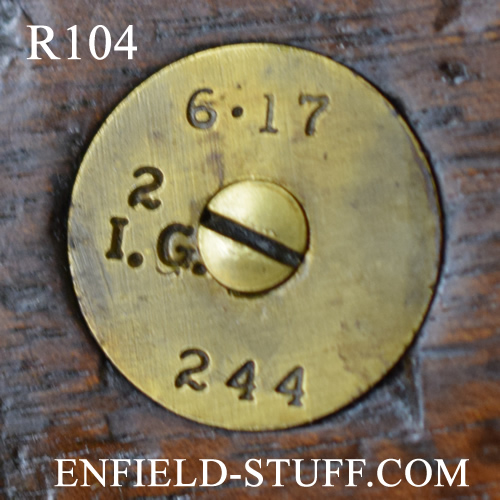 |
Rifle 104
SMLE No. 1 Mk III* BSA 1916. Marked “2 I.G.” and dated “6 17” – 2nd Battalion, Irish Guards. The Irish Guards – the 4th Regiment of the Brigade of Guards – was raised in 1900 by order of Queen Victoria to commemorate the valor of the Irish regiments who had served in the Boer War. A one-battalion regiment in 1914, the 2nd Battalion was raised for wartime service (as was the 3rd Reserve Battalion), and entered action in France in August 1915, serving on the Western Front until the end of the war in November 1918. Overall 90% + finish; wood is VG with only the usual nicks and dents. Matched (bolt, receiver, barrel, rear sight leaf, nosecap, forestock). No import marks.
|
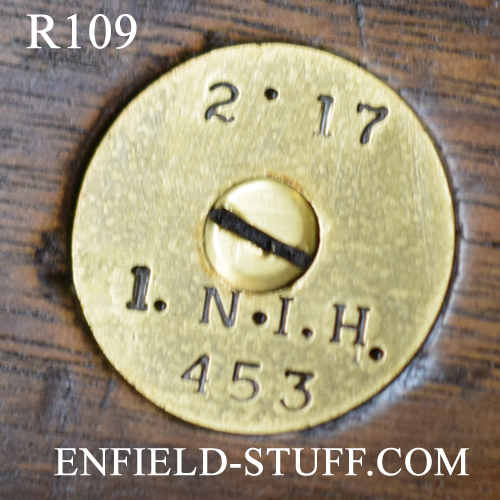 |
Rifle 109
SMLE, No. 1 Mk III*. BSA 1917. Marked to 1 N.I.H. (1st North Irish Horse, 2/17). The 1st NIH was formed in May 1916 from A, D, and E Squadrons of the NIH. In March 1918 it was converted to a cyclist battalion. In February 1917 1 NIH was serving with the Cavalry Division in France. Overall 90%. Wood VG with typical small dings and dents. Matched (bolt, receiver, barrel, sight, nosecap, and forestock. No import marks.
|
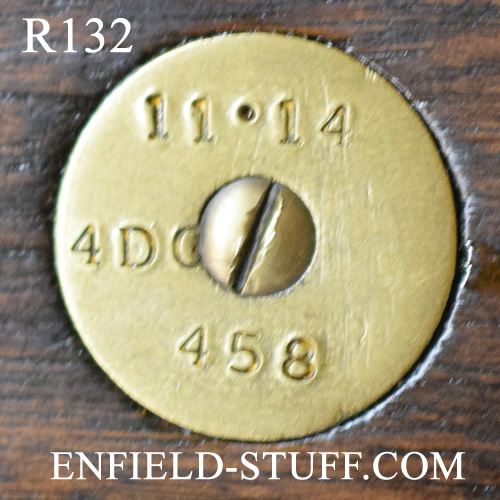 |
Rifle 132
SMLE, No. 1 Mk III. Enfield 1914. With long range auxiliary sights and windage rear sight. Marked on stock disk "11 14" and "4 DG" indicating that it was in use by the 4th (Royal Irish) Dragoon Guards in November 1914. The 4th DG arrived in France on 15th August 1914 and - on 22nd August 1914 - fired the first shot against German forces by the BEF. Later that day, the regiment made the first British cavalry charge of the war. Overall 90%. Wood VG with typical small dings and dents. Matched (bolt, receiver, barrel, sight, nosecap, and forestock. No import marks.
|
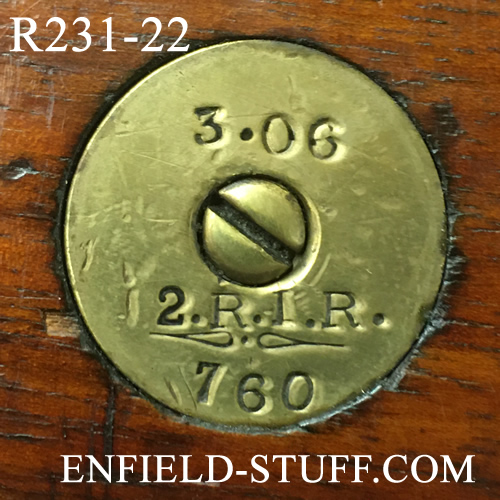 |
Rifle 231-22
Caliber .22 Rifle, Short, .22 Patt 14 No. 1. Enfield 1905. This rifle started out sometime between 1888 and 1899 as a 'Long Lee' as evidenced by the clearing rod channel in the forestock. The clearing rod was abolished in 1899. In 1905 the rifle was one of 26, 532 converted at RSAF Enfield to the new 'Short Lee' MkI . The clearing rod channel was filled, the forestock shortened, a new barrel installed and the distinctive Mk I nosecap (with inward ears) installed. The left buttsocket was stamped ENFIELD / 1905 / SHT LE / COND II. In March 1906 the rifle was issued to the 2nd Battalion Royal Irish Rifles.
As an experiment, in 1915 some 427 of the ConD Mark II were sent to A.G. Parker Company to be converted to .22 caliber smallbore trainers. The RIR mark was cancelled. The barrel was bored out and a .22 caliber "Parker tube" liner permanently installed; the bolt altered, the rear sights marked with a new 25 yard marking. Magazine springs and followers were removed and the empty case (stamped .22) used to collect the fired brass. The original long-range volley sights were retained. Magazine cutoff were removed. The right buttsocket is stamped A.G. Parker & Co. Ltd., Birmingham, .22 PATT '14 No 1. The No. 1 is a later addition, indicating that the conversion was accomplished prior to April 1916 when the Pattern 1914 No. 2 (based on the Mark III rifles) was adopted. Left side of receiver ring and the right side of the butt stock have the broad arrow in D marking indicating ownership by Australian Defense Department. This rifle is all original with all matching numbers. Very tiny import marks J.J.Co.NYC on the barrel hidden under the rear sight elevator.
|